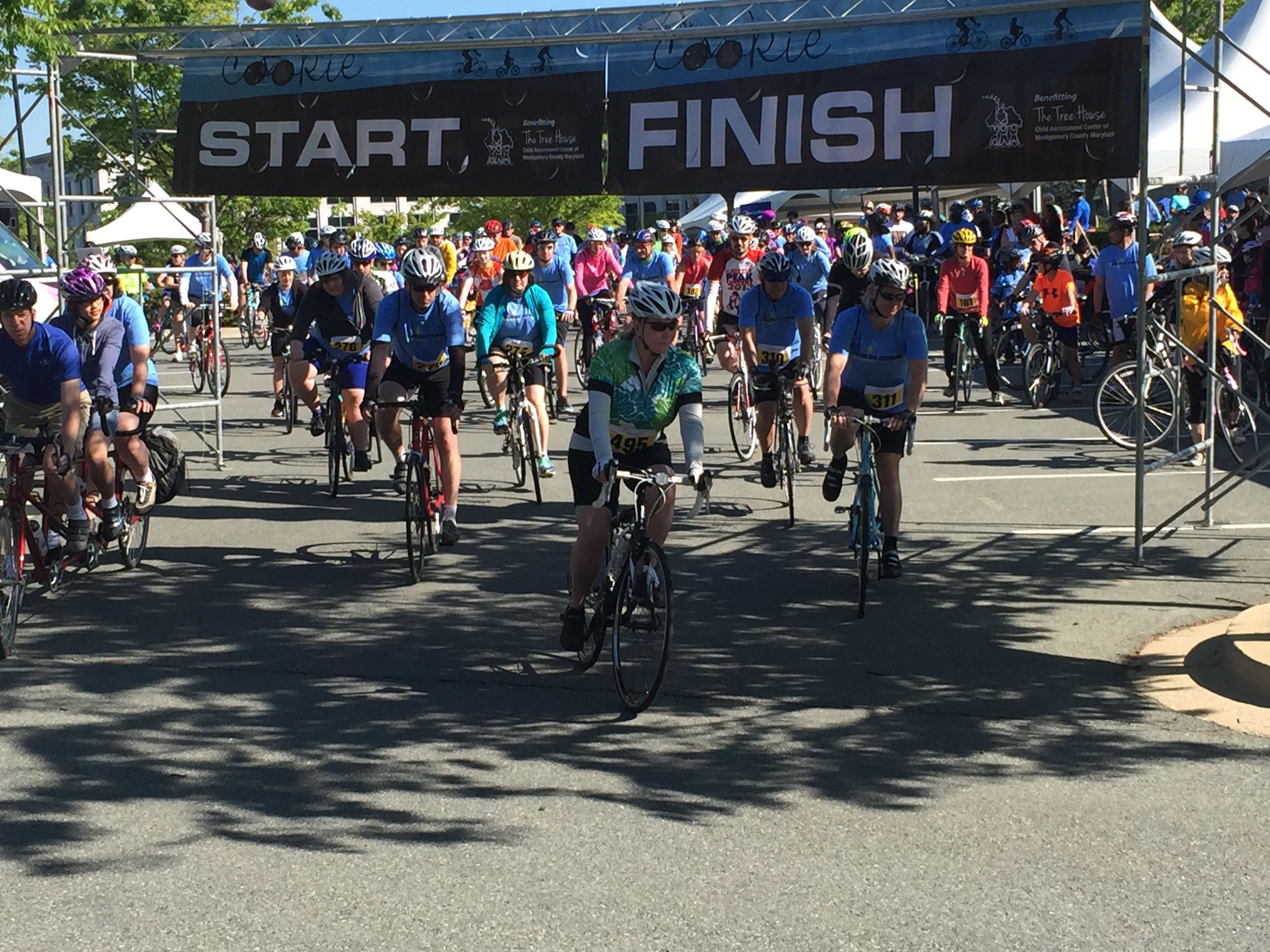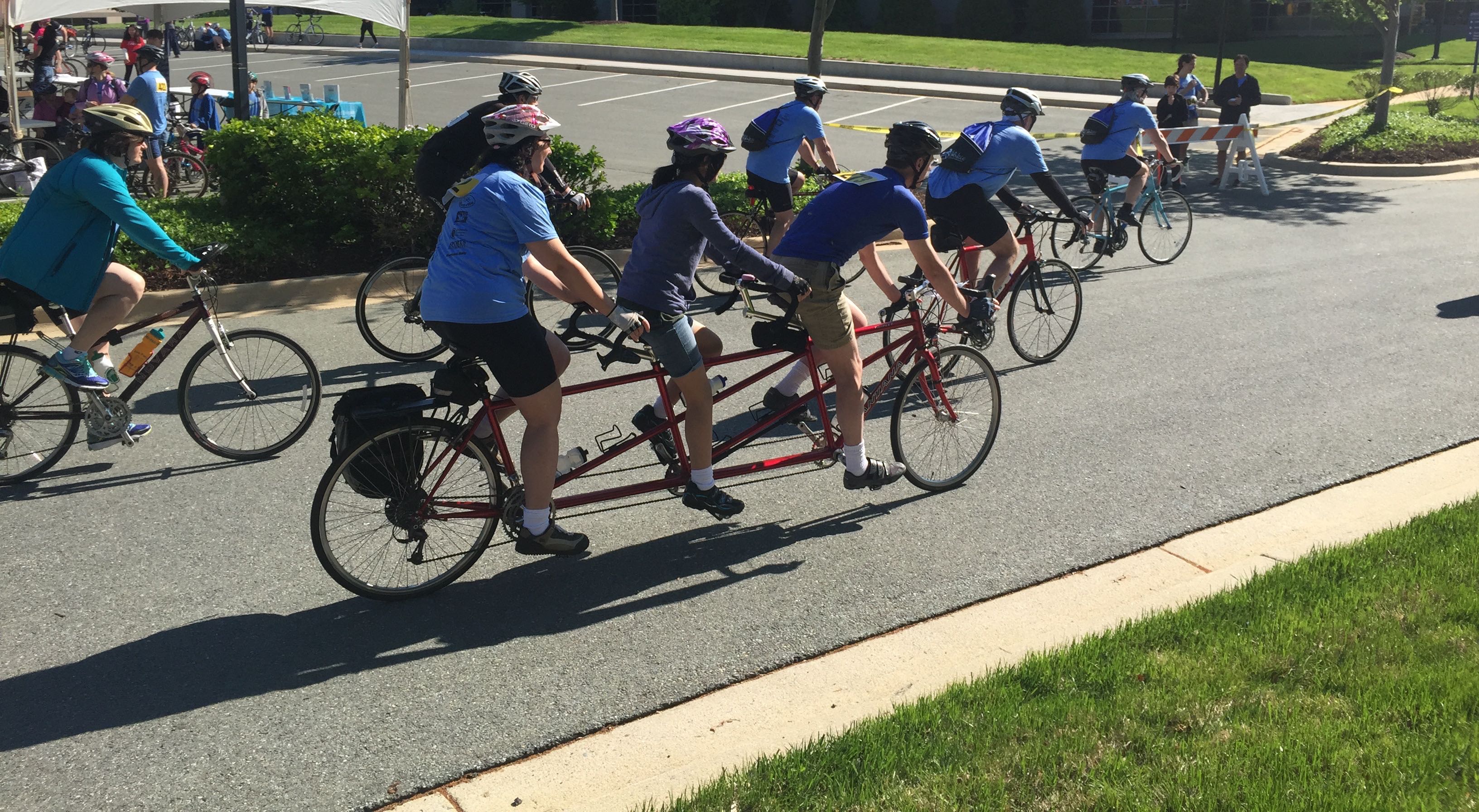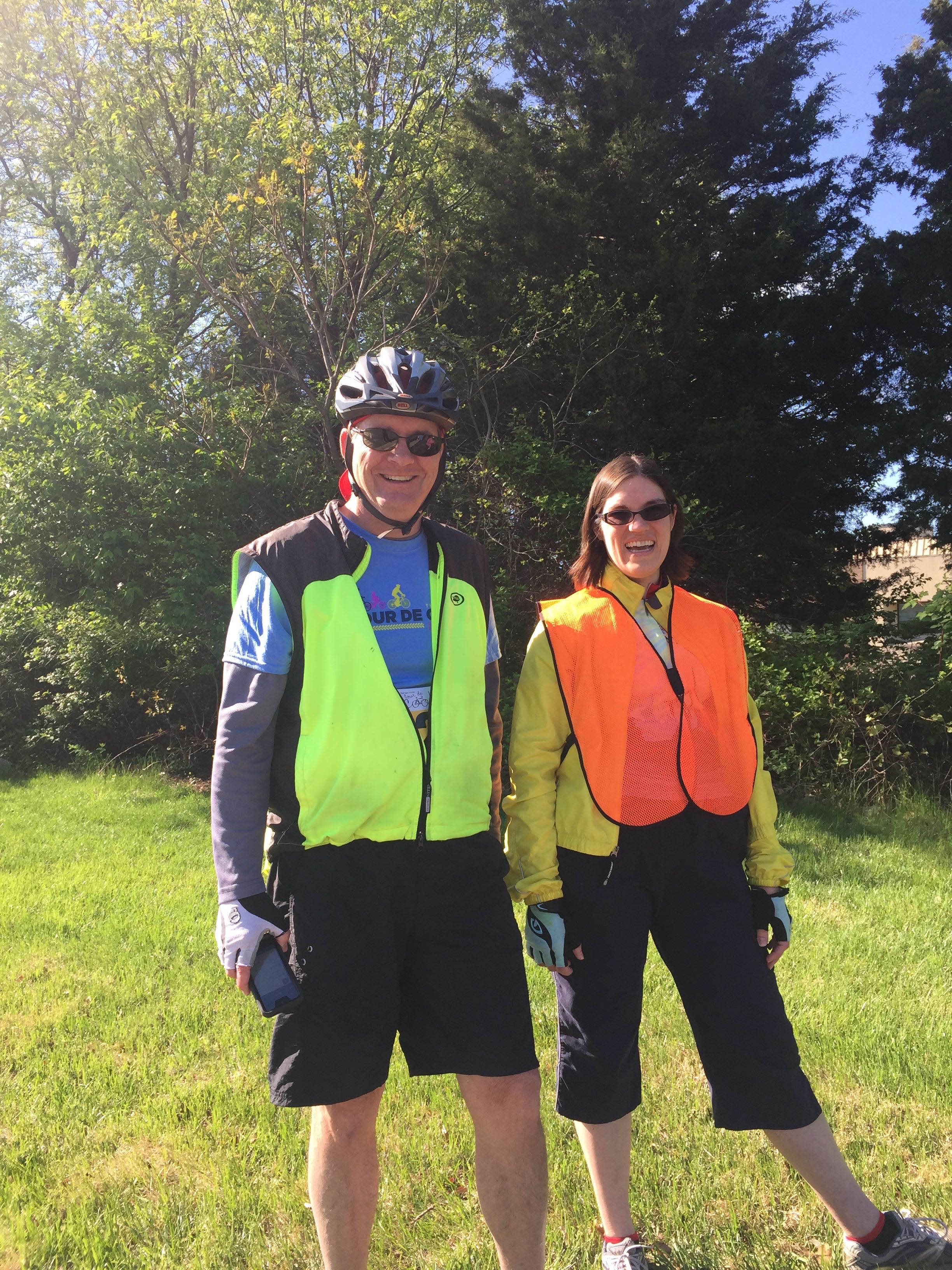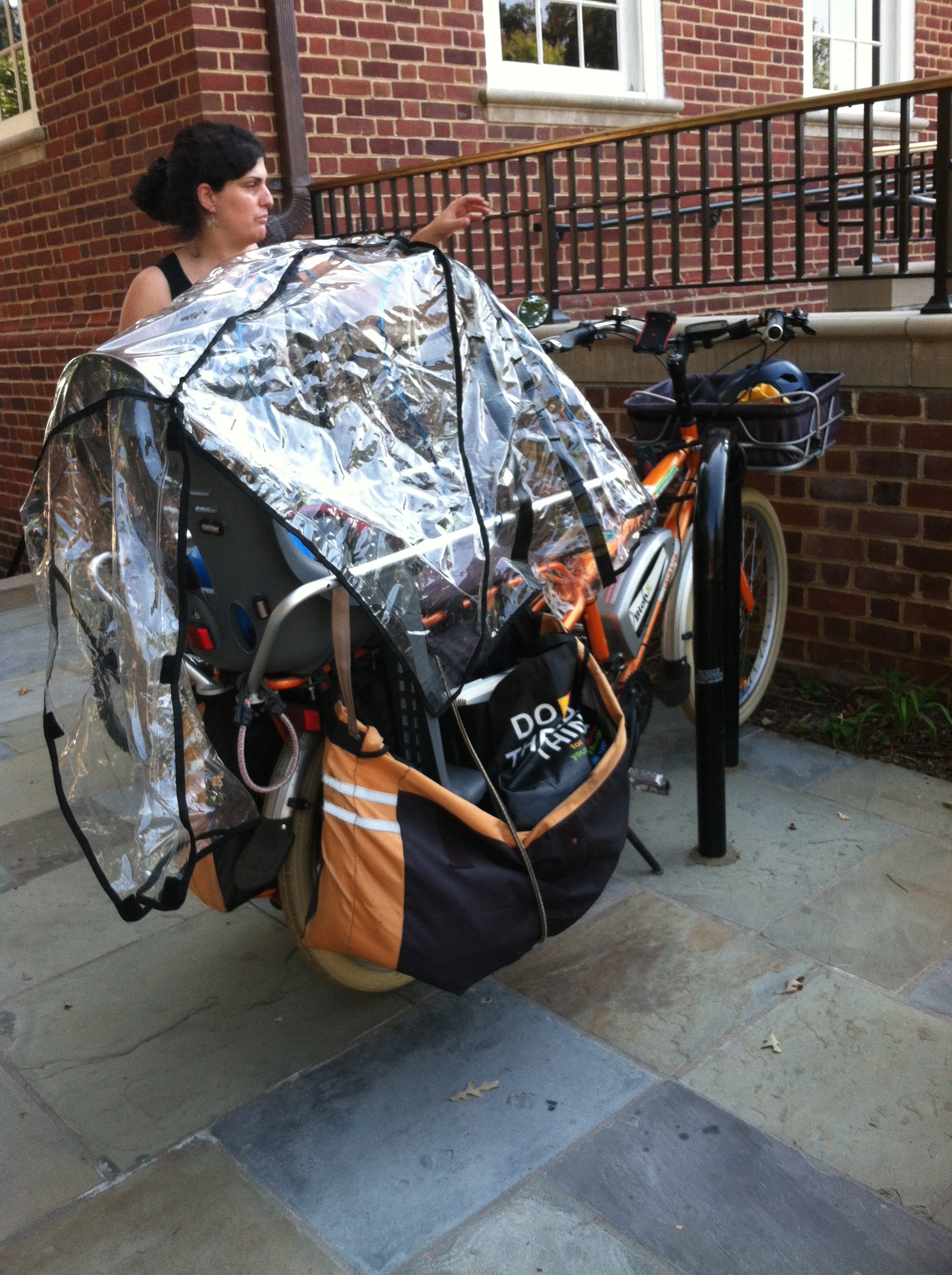Most of the time, when I do a bike ride, my training is the most important aspect. But when I’m bringing along a small passenger, I need his willing participation as well. For the upcoming Tour de Cookie, I was quite concerned that Sprout was not going to buy into my plan. Fortunately, after pulling my bike out of the shed for the first time this spring for a ride with him, I’m much more confident that we’ll all have a good time.
While I rode with Sprout a number of times last year, he was never fond of it. Although he was big enough to be in the trailer, he wasn’t tall enough to see well out of the windows. He was also much more adverse to risk than he is now, making the bumps rather disconcerting to him. To make it worse, he absolutely hated hats, especially his bike helmet. He would whine, yell, and try to pull it off to no avail. He smiled all of once when I put him in the trailer last year. He usually fell asleep, looking uncomfortable with his head on his chest. I probably would have skipped riding with him altogether if I hadn’t been leading the Rockville Kidical Mass rides. You can’t really lead a ride for families with young kids without your young child with you.
This year already seemed more promising even before we got on the bike. Sprout’s nearly twice as old as he was last spring. Since the ride in November, his demeanor and understanding of what’s going on has evolved considerably. He can now use words to tell me what’s wrong, follow social cues, understand simple explanations, and predict what will happen next. All of these characteristics made me think he might have a much more pleasant, less disorienting biking experience now than he did then.
Even better, he now knows what a bike is and can say the word. There are bikes in a number of his books, including Richard Scarry’s Cars and Trucks and Things that Go. He loves pointing them out with a proud, “Bike!” On the way home from the playground, he always stops at the Capital Bikeshare stand to spin the pedals.
A few days before our first ride, I introduced the idea of my bike and trailer to him. I hooked up my pump to my tires and encouraged him to “help” me pump by pushing down on the handle. He wanted to poke at everything, so I let him spin my bike’s pedals and touch the tires. I tried to keep his little hands away from the gears, the many sharp or pointy components, and the greasy chain. Unfortunately, I was only partly successful in that last effort. When I took the tarp off of the trailer, his first instinct was to climb inside.
For our first ride of the season, I got home early on a pleasantly warm day. Unfortunately, the sky had turned from blue and calm to gray and windy during the day, so I limited our ride to less than 2 miles. Although it was going to be far less than the 15 mile Tour de Cookie (plus a few miles each way to get back and forth from the start), I figured it was better to get something in than nothing.
For starters, Sprout seemed much less upset about his helmet than he had been in the past. It fit him better (his head has grown), he’s taken a fondness to hats after reading Jan Brett’s The Hat, and he’s been interested in my helmet for a while. I explained, “You get to wear a bike hat like mommy!”, which seemed to help. While there was a little bit of whinage, it wasn’t a National Emergency the way so many things in toddlerdom are.
When Chris helped me put Sprout in the trailer, he looked around and actually smiled! He seemed eager to find out what was going to happen. (He’s young enough that he has no memory of last year’s experiences.) He was a little startled when we started to move, but he quickly caught on, leaning forward and giving me a running commentary of our surroundings. I heard a little chorus of “Car! Car! Car!” every time we passed a parked car. I explained how this was like the horse and cart (or zebra and carriage or elephant and bandstand) in To Think That I Saw It on Mulberry St., except I was the beast of burden and he was the passenger. After reading all of these transportation books and walking around himself, I suspect he has a much deeper appreciation as to what is involved in pulling him around. He actually liked it so much that he cried when I put the tarp over the trailer when we were done.
Besides enjoying the ride, Sprout had a much different reaction than when he’s in the car. I’m not sure if it’s that he can’t see much or it’s the vibration, but for short car trips, he goes into a really quiet, meditative-like state. He genuinely doesn’t seem interested in interacting, even if you try. In contrast, he was very engaged in the trailer, talking to me even though I had a hard time hearing him. I love that even though the trailer is more isolated than a kid’s bike seat, he was still getting some of the benefits of the biking experience.
To top it all off, I was reassured that pulling the trailer didn’t feel that bad. While it weighs a lot more than my normal bike, it didn’t feel that much worse than riding a Bikeshare, which I use almost daily.
Overall, I’m very positive about our chances for having a good time doing the Tour de Cookie. I can always ply him with cookies, and if all else fails, Chris will have the car.






